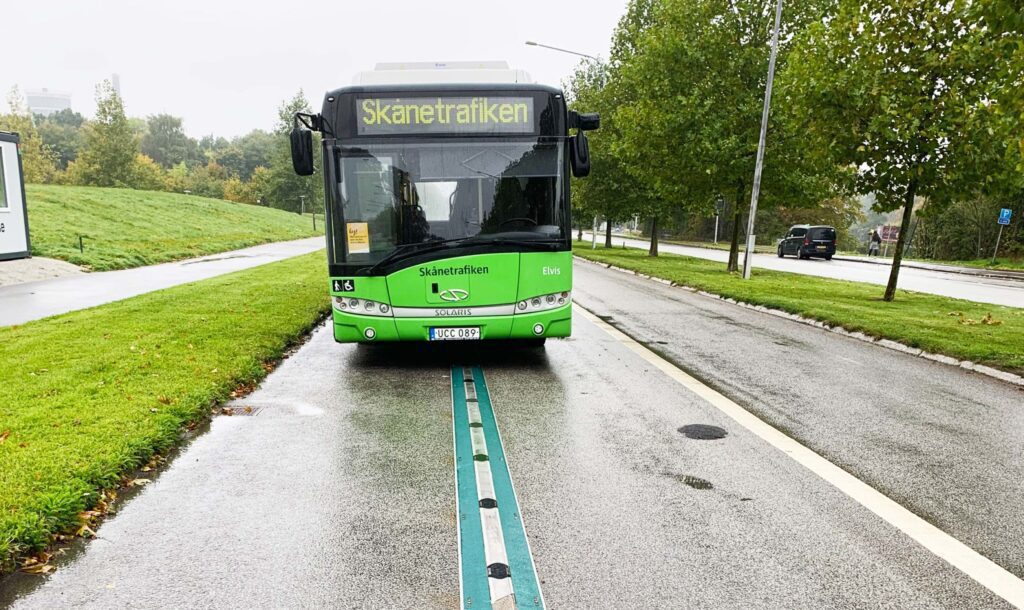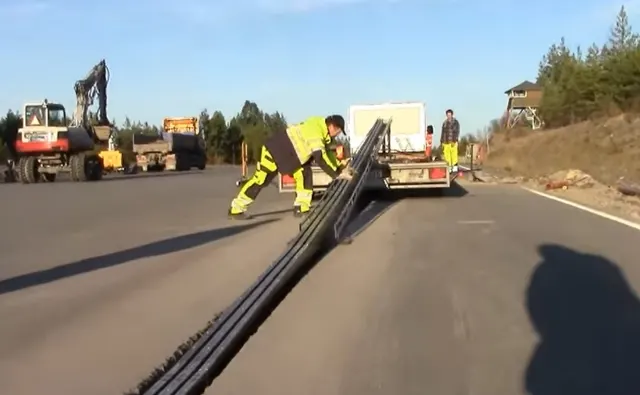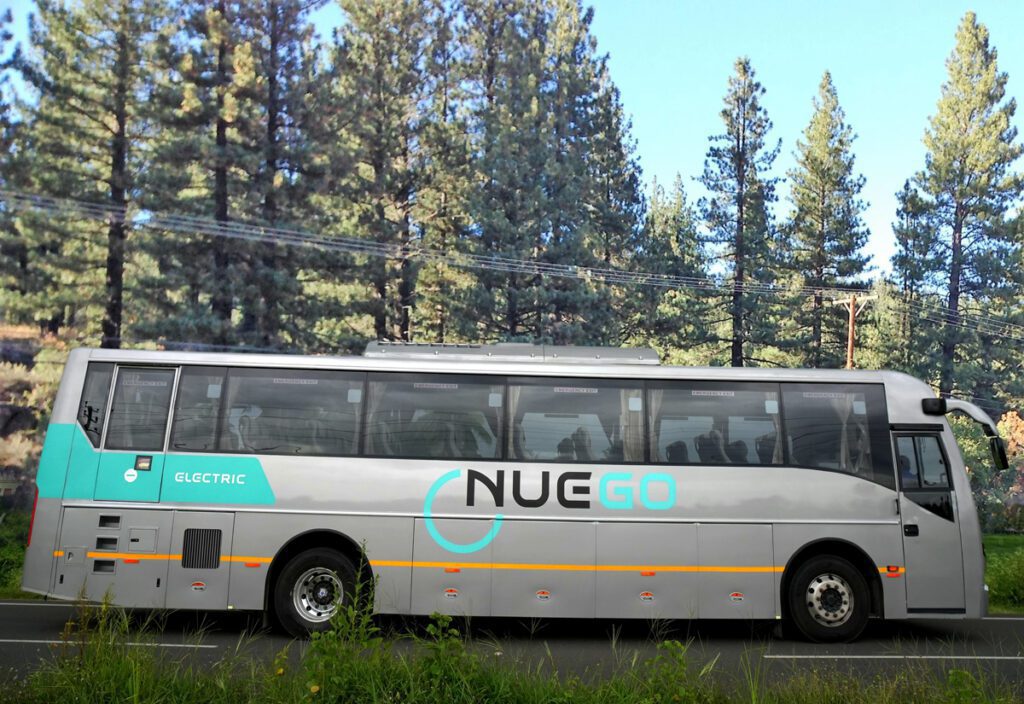Table of Contents
Introducing Sweden’s 2km Electrified Road Near Stockholm
Sweden has made a remarkable breakthrough in sustainable transportation with the opening of the world’s first electrified road for vehicles. Aiming to tackle the challenges of affordable battery manufacturing and keeping electric vehicles charged, a 2km (1.2 miles) electric rail has been installed on a public road near Stockholm.
The innovative project involves embedding the rail in the road, offering a potential solution to these issues. This revolutionary technology has the potential to change the way we travel and drive the transportation sector toward sustainable solutions.
Sweden’s government has already drafted a national map for future expansion, demonstrating its commitment to achieving independence from fossil fuels by 2030, requiring a 70% reduction in the transport sector. This initiative to electrify the road connecting Stockholm Arlanda airport to a logistics site outside the city is the initial move towards reaching this goal.

How Electrified Road for Charging Vehicles Could Transform the Future of Travel
In an innovative move towards sustainable transportation, the road linking Stockholm Arlanda airport to a logistics site outside the city has been electrified. The energy required to power vehicles is transferred from two tracks of rail embedded in the road via a movable arm fixed to the bottom of the vehicle.
This technology, reminiscent of a Scalextric track, ensures that the vehicle stays connected to the power source only when it is above the 50m electrified section. Furthermore, in the event of overtaking, the arm disconnects automatically, ensuring the safety of all drivers on the road. This novel system is a significant step towards achieving Sweden’s ambitious goal of achieving a fossil fuel-free transportation system.

Once a vehicle comes to a halt, the power supply is cut off, and the technology can calculate the amount of energy consumed by the vehicle, making it possible to charge the user according to their electricity usage. This allows for individualized billing per vehicle and user. This dynamic charging, as opposed to the use of roadside charging posts, means that the vehicle’s batteries can be smaller, along with their manufacturing costs.
Electrified Road for Charging Vehicles A Game-Changer for Sustainable Transportation
Hans Säll, the CEO of the eRoadarlanda consortium, stated that the newly developed technology could be applied to both vehicles and roadways. With over 500,000 kilometres of roadways in Sweden, including 20,000 kilometres of highways, electrifying a substantial portion of them could be possible.
Mr Säll added that electrifying 20,000 kilometres of highways would be more than enough, as the distance between two highways is not more than 45 kilometres, which electric cars can travel without the need for a recharge. Some experts suggest that electrifying only 5,000 kilometres could suffice.

Innovative Technology Behind Sweden’s Electrified Road
The technology behind Sweden’s electrified road involves the seamless integration of a movable arm that connects to the vehicle’s underside, drawing power from two embedded rail tracks. This system enables vehicles to draw electricity while on the move, ensuring they don’t rely on large batteries for long trips. As a result, vehicles can stay lighter, more energy-efficient, and cheaper to produce.
The dynamic charging process ensures that energy is supplied only when needed. This means that as vehicles travel across electrified sections, they receive continuous energy, but as soon as they leave the charging zone or overtake another vehicle, the system disconnects automatically. The power supply is also cut off once a vehicle stops, ensuring no energy is wasted and further optimizing energy efficiency.
Cost Benefits of Electrified Roads Over Traditional Charging Systems
Electrifying roads offers a significant cost advantage over traditional electric vehicle (EV) infrastructure. The cost to electrify a kilometre of road is approximately €1 million, far more affordable compared to urban tram systems, which can cost up to 50 times more per kilometre. This price difference makes it a viable solution for widespread implementation across highways and urban roads, especially considering the savings in battery manufacturing.
The application of this technology could lower costs for electric vehicle owners in the long term. With smaller batteries required, the manufacturing cost of electric vehicles could be substantially reduced, and the need for roadside charging posts is also eliminated. This shift could play a crucial role in making EVs more affordable and accessible to a wider audience.
Sweden’s Vision for a Fossil-Free Transportation Future
The introduction of the electrified road aligns with Sweden’s ambitious sustainability goals. The Swedish government has committed to reducing fossil fuel usage in transportation by 70% by 2030. The electrification of roads is one of the primary strategies to achieve this target. By embedding sustainable charging infrastructure into the very roads that vehicles travel on, Sweden is setting the stage for a new era of clean, renewable transportation.
In addition to the electrified road linking Stockholm Arlanda Airport to a logistics site, Sweden has developed a national strategy to expand this technology further, aiming to electrify highways and major roads across the country. This innovative approach can significantly reduce dependence on fossil fuels, while also promoting the use of electric vehicles for long-distance travel.
Potential for Global Expansion: Sweden’s Electrified Roads on the World Stage
Sweden’s electrified road technology is not limited to its national borders. The government has opened discussions with Berlin to explore the potential for expanding this electrification concept to other countries. The implementation of this system in other European cities and beyond could help accelerate the global transition to sustainable transportation.
Hans Säll, CEO of the eRoadArlanda consortium, sees this technology as highly scalable. He envisions the possibility of electrifying vast sections of Sweden’s road network, as well as rolling out this technology internationally. The potential for large-scale application makes this system an appealing model for governments worldwide looking to reduce carbon emissions and promote sustainable transportation solutions.
The Role of Renewable Energy in Electrified Roads
A crucial aspect of Sweden’s electrified road system is its integration with renewable energy sources. As national grids shift towards renewable energy, the sustainability of this initiative grows even more significant. By powering electrified roads with green energy, Sweden is reinforcing its commitment to a clean and sustainable future.
This combination of renewable energy and dynamic road charging could set a precedent for how countries can tackle the challenges of transportation emissions, battery storage, and energy efficiency. It could revolutionize how cities and countries approach transportation infrastructure in the face of climate change.
Sweden’s Electrified Roads: A Blueprint for the Future
The introduction of electrified roads is more than just a technological breakthrough – it is a transformative shift toward sustainable, cost-efficient transportation. By reducing the reliance on large vehicle batteries and providing dynamic, on-the-go charging, Sweden is leading the charge for a future where electric vehicles can travel longer distances without the fear of running out of power. With the potential for widespread adoption, this innovative project could pave the way for a cleaner, greener transportation ecosystem worldwide.







